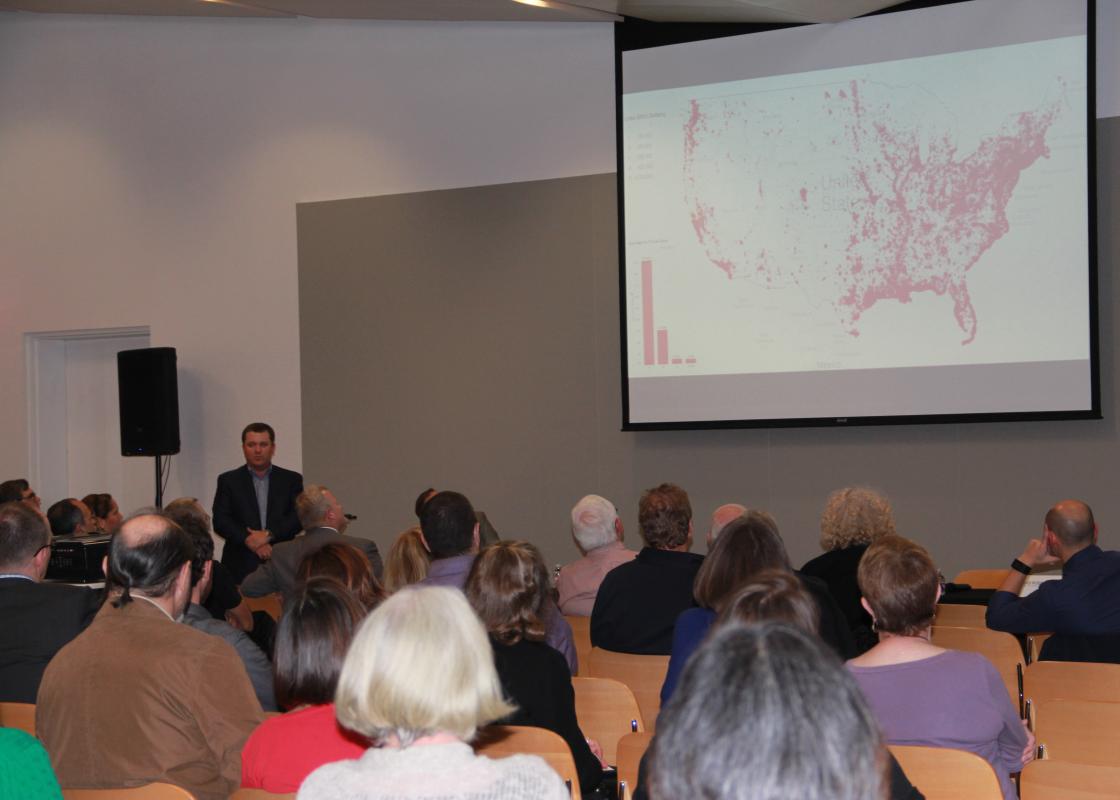Although the videos below were recorded before Harvey, the recommendations from the experts at Resilience H2Ouston: Living in Floodplains civic forum still ring true. They speak about flood management from different angles including engineering, floodplain mapping, landscape design, architecture, and government. Moderated by Eric Berger, meteorologist and editor of Space City Weather, and organized by Rice Design Alliance, the publisher of this blog, the forum featured the following presenters:
Watch the Alisa Max video here.
Alisa Max, a civil engineer with Harris County, briefly explains the floodplain maps. She draws a distinction between overland flooding from “sheet flow” (water that makes its way to basins and bayous) and “riverine” flooding (overflowing bayous). She also gives an overview of Harris County’s flood management approach. New construction is required to be built 18 inches above the 100-year floodplain and critical facilities, like hospitals, three feet above the floodplain. She says the lessons learned from the pre-Harvey floods, like the Memorial Day floods, included the need to regulate construction sites and to model sheet flow in new developments.
Watch the Wesley Highfield video here.
Wesley Highfield, Associate Professor, Department of Marine Sciences, Texas A&M University at Galveston, says that, in the Houston region, “we all live in the floodplain” even if we are not in a regulated “100-year floodplain.” He repeatedly recommends that everyone buy flood insurance noting that 23 percent of insured flood losses occur outside a regulated floodplain. Using various maps, he shows that the intensity of rainfall is increasing in the United States and that regulated floodplains have grown over time. He shows that, for Meyerland, construction from 1979 may not have been in a regulated floodplain at the time but now it is. The builders and owners are not necessarily to blame.
Watch the Ed Wolff video here.
Ed Wolff, President of Beth Wolff Realtors, speaks about the psychological and economic effect of floods on homeowners. His own house in Meyerland has flooded repeatedly. Using data from elementary school zones within Meyerland, he shows that after major floods, houses are torn down and replaced with larger homes built to the standards of that time. Many are 18 inches above what was considered the 100-year floodplain at the time. He also shows that home values often return to their original value or increase in value after 18 to 24 months, though, even before Harvey, he wondered if this historical pattern would continue. Finally, he calls for a national catastrophic insurance plan in lieu of national flood insurance. By grouping tornadoes, fires, earthquakes, and flooding, the pool would be larger and the risk spread across more people.
Watch the Keiji Asakura video here.
Keiji Asakura, Principal Designer at Asakura Robinson, talks about the “small things” such as rainwater collection, green roofs, bioswales, rain gardens, and permeable paving. These types of landscapes can absorb, store, and slow water so that the large-scale infrastructures that the city and county manage do not flood as frequently or severely. Bioswales are linear drainage courses with gently sloped sides that are layered with modified soils. These soils absorb more water than clay and the microbes help to clean or degrade polluting substances like heavy metals.
Watch the David Robinson video here.
David Robinson, Houston City Council At-Large Position #2, speaks about how the city is allocating funds to address flooding, including 22 special projects for a total $10 million. These strategic fixes include drainage rehab such as dredging out roadside ditches and culverts. He says the Rebuild Houston program is prioritizing the worst situations first. He recommended that people not build in 100-year and 500-year floodplains and acknowledges the effects of climate change. He also calls attention to the SSPEED Center proposal for protection against storm surges.
The civic forum was held Wednesday, March 8, 2017, at 6 p.m. at the Cherie Flores Garden Pavilion inside the McGovern Centennial Gardens at Hermann Park. The civic forum was made possible by the following underwriters and sponsors, including Minnette and Peter Boesel, DLR Group, Hoar Construction, Skanska USA Commercial Development, Telios, Vaughn Construction, and by grants from the City of Houston through the Houston Arts Alliance and the Texas Commission for the Arts.










